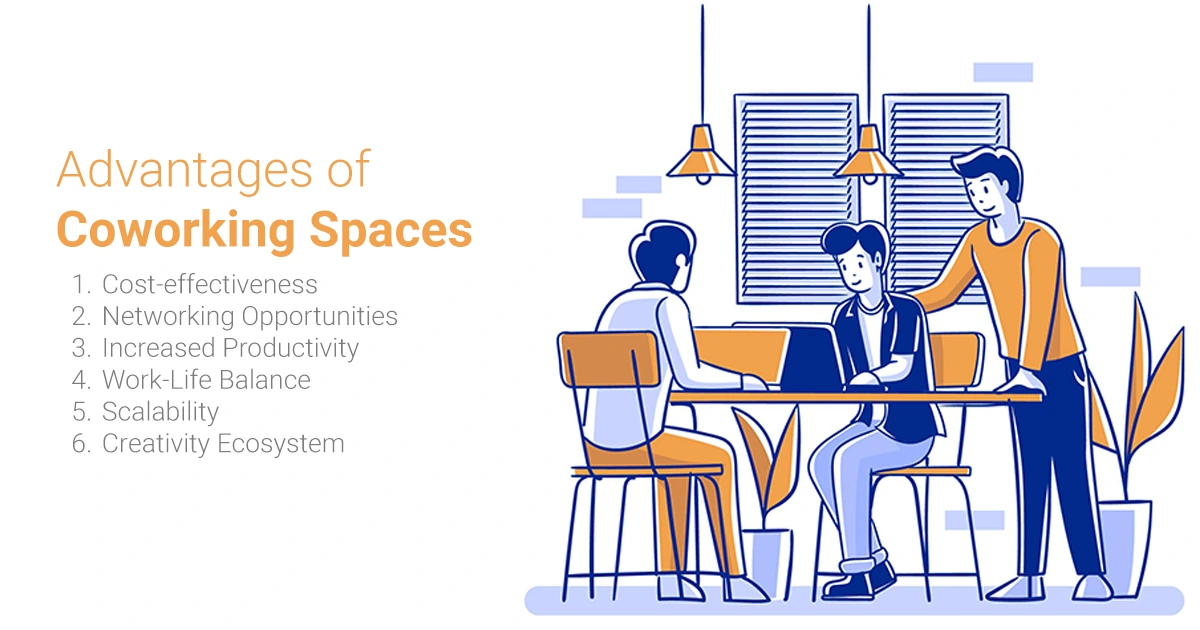Coworking spaces are becoming common due to the increase in digital enterprises and hybrid work methods. Beyond the hype, though, what exactly is a coworking space and why is it so essential to the modern business and professional environment?
The solution is found in the increasing need for collaboration, scalability, and flexibility—values that conventional office arrangements sometimes fail to provide. Coworking spaces have responded by developing complex, service-oriented ecosystems that provide more than Wi-Fi and desks. They offer community without commitment, organization without rigidity, and infrastructure without the need for long-term capital expenditures.
Understanding coworking spaces and their ramifications is crucial for both users and landlords as businesses reevaluate their real estate strategy in the wake of the pandemic and professionals look for settings that strike a mix between autonomy and accountability.
What Is a Coworking Space?
A coworking space is a communal workspace where people with different backgrounds can work together or independently. These areas provide a professional setup with flexible access in an effort to promote networking, creativity, and productivity.
Coworking spaces usually provide variable membership plans, ranging from hourly and daily access to monthly subscriptions, in contrast to standard office leases. High-speed internet, conference rooms, private cabins, event spaces, printing facilities, and well-stocked pantries are typical amenities.
What exactly are coworking spaces, to be more precise? They are ecosystems that foster creativity, corporate expansion, and professional advancement rather than merely being physical infrastructures.
Key Features of Co-working Spaces
Flexibility: Members can select private offices, dedicated desks, or hot desks according to their particular requirements. Plans are frequently scalable and made to expand with the company.
Community-Driven Environment: By encouraging cooperation through workshops, networking gatherings, and community-driven projects, co-working spaces foster a supportive and information-sharing culture.
Professional Infrastructure: These areas offer every requirement for a business setting without the hassle of logistical management. This covers IT help, administrative support, high-speed connectivity, and ergonomic furnishings.
Accessibility: Since many coworking spaces are open around the clock, professionals can work whenever it’s most convenient for them. Locations are typically found in conveniently accessible urban areas or core business districts.
Value-Added Services: Mail processing, mentorship programs, business registration services, and access to startup ecosystems or fundraising platforms are examples of additional offers.
Coworking Spaces and the Real Estate Industry
The rise of coworking spaces is having a significant impact on the real estate market. Here’s how:
Optimal Space Utilization: Coworking spaces turn vacant commercial real estate into thriving business hubs by making effective use of underutilized space.
Flexible Leasing Models: In response to the growing need for flexibility in the business market, property owners and developers are now engaging with coworking operators to implement short-term leasing arrangements.
Greater Rental Yields for Landlords: Because coworking models share infrastructure and charge more for amenities than standard office leases, they can provide landlords with greater rental yields per square foot.
Urban Revitalization: Numerous coworking spaces have been set up in formerly underappreciated urban neighborhoods, contributing to the revitalization of those communities. The demand for and value of nearby real estate are positively impacted by this.
Diversified Investment Portfolios: To lessen reliance on single-tenant leasing and to capitalize on the rapidly expanding flexible workspace market, real estate owners are increasingly adding coworking spaces to their portfolios.
Who Uses Coworking Spaces?
Independent contractors and freelancers: These are people who need a structured workplace but aren’t ready to sign a long-term lease.
Startups & SMEs: Expanding companies in need of affordable office solutions that offer scalability and collaboration possibilities.
Remote Workers: Business personnel who operate from locations other than typical headquarters and who gain from a formal environment.
Consultants and digital nomads: Professionals who operate independently and are looking to maintain their workplace across locations or nations.
Enterprise Teams: Big businesses are using coworking spaces more and more to host regional branches, satellite teams, and innovation laboratories.
Advantages of Coworking Spaces

Cost-effectiveness: There are substantial overhead costs associated with renting conventional office space. Coworking spaces cut expenses by removing capital expenditures and providing shared amenities.
Networking Opportunities: These settings inherently encourage relationships across different industries, which can lead to collaborations, mentorships, and clientele.
Increased Productivity: Coworking facilities’ layout and atmosphere are intended to reduce distractions and increase productivity.
Work-Life Balance: To promote mental health and work-life balance, many facilities provide wellness initiatives, fitness centers, or leisure rooms.
Scalability: Without the administrative limitations of a fixed lease, businesses are free to grow or shrink. This flexibility is particularly important for new businesses and rapidly expanding enterprises.
Creativity Ecosystem: Coworking spaces frequently act as gathering places for networks of investors, accelerators, and incubators, creating an ideal environment for cooperation and creativity.
Challenges and Considerations
Despite the significant advantages, some difficulties should be noted:
Lack of Privacy: Confidentiality may be jeopardized in shared venues, particularly for companies handling sensitive data.
Noise & Distractions: Because these spaces are open, they might occasionally make it difficult to focus.
Limitations on Branding: Some businesses may find the coworking model restrictive in terms of personalization and the desire to have a unique identity.
Dependency on Facility Quality: The management and upkeep of the space have a significant impact on members’ productivity and pleasure.
The Global Impact of Co-working Spaces
Over the past ten years, the worldwide coworking market has grown at an exponential rate. In 2024, there were over 40,000 coworking spaces globally, according to industry statistics, and growth is expected to continue. Digital change, shifting workforce demographics, and an increasing desire for flexible work arrangements are the main drivers of this trend.
Germany, the United States, the United Kingdom, and India have become important hubs. Coworking spaces in large cities have boosted entrepreneurship and urban renewal in addition to optimizing the use of commercial real estate.
The Future Outlook
Coworking is a fundamental change in how we view and use workspaces, not just a fad. Coworking spaces are anticipated to develop further by incorporating smart technologies, sustainable designs, and industry-specific hubs as distant work and hybrid models continue to gain popularity.
Additionally, we should expect to see more corporate collaborations, in which businesses cooperate with or invest in coworking brands to give workers high-performance, flexible workspaces.
From a real estate standpoint, developers will probably give preference to adaptable and modular designs that meet both conventional and flexible office needs. Innovation in property management and workspace design will be fueled by this combination.





Comments are closed